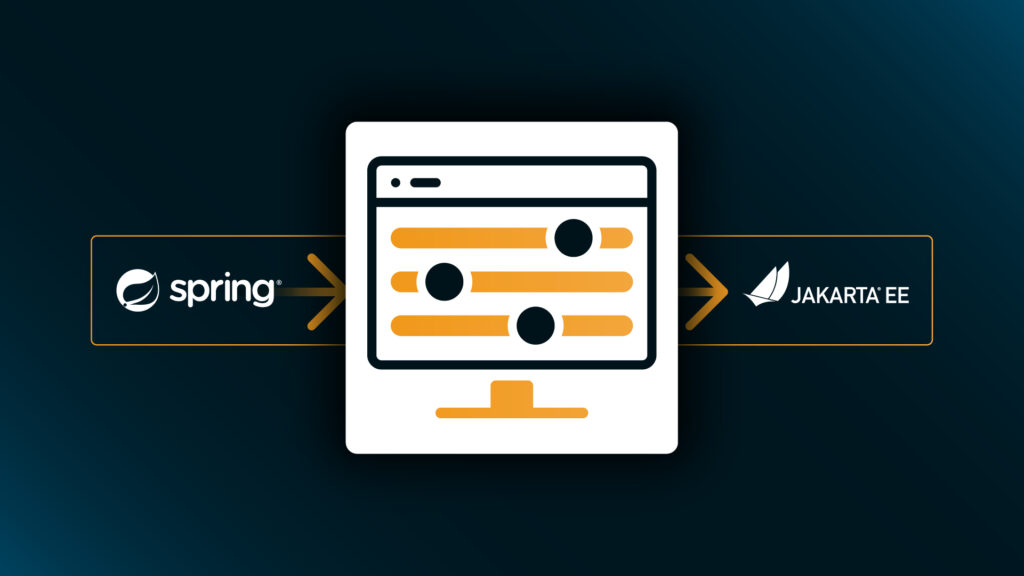 3 minutes
3 minutes
End-of-Life Technology: How to Drive Innovation Without Compromising Stability
When legacy systems approach end-of-life (EOL), enterprise IT teams typically face the choice of moving forward at all costs […]

If you’ve been living in the Spring ecosystem, you’re used to fast project setup. Spring Initializr gives you a sleek interface, some starter dependencies and a running project within minutes. Now you’re moving to Jakarta EE, where do you begin?
In this blog, you’ll see how Spring developers can create Jakarta EE applications with the same ease they’re used to from Spring Initializr.

Let’s be honest: Spring Boot abstracts away so much of the setup pain that you forget it’s even there. You don’t worry about the underlying servlet container, dependency versions or deployment descriptors, as Spring Boot handles it all.
If you’ve spent most of your career building microservices and APIs with Spring Boot, you’ve probably grown accustomed to a certain rhythm to ship features quickly:
Now, even though you are a Spring aficionado, for a number of reasons you may be tasked with developing a Jakarta EE application. Maybe it’s because the company landed a project where the framework was specified. Maybe it’s time to modernize any existing Java EE workloads, and the transition to the Jakarta EE namespace was identified as the most suitable option. Maybe you just want to see what’s out there beside Spring and expand your skillset, especially with the release of Jakarta EE 11.
In any case, while Spring and Jakarta EE share some commonalities as enterprise Java frameworks, if you’ve never touched Jakarta EE, you may feel out of your depth. You might think Jakarta EE is heavyweight, XML-heavy and bound to large application servers. But the good news is the platform has evolved. Modern runtimes like Payara Micro run lean, start fast and work beautifully with container deployments.
And the even better news? The latest Payara Starter, a free online developer tool to generate entity relationship diagrams and code, makes scafollding a Jakarta EE project as easy — dare I say, easier than creating a Spring Boot project with Spring Initializr.
Payara Starter is a free, web-based project generator that offers a web-based UI that walks developers through scafollding a Jakarta EE application step by step. Think of it as Jakarta EE’s version of Spring Initializr. In effect, it is a tool that gives you a ready-to-run project with all the right dependencies, packaging and configuration for Payara Platform.
The latest version of Payara Starter has three major features that make it a game-changer:
Think of Payara Starter as a mirror image of the experience you’ve enjoyed in Spring Initializr. Both tools:
| Feature | Payara Starter | Spring Initializr |
| Supported Framework | Jakarta EE | Spring Boot |
| Build Tools | Maven, Gradle | Maven, Gradle |
| Cloud-Ready | Yes | Yes |
| UI/UX | AI powered entity relationship diagram generator and previewer | Intuitive forms, real-time dependency search |
| Code Download | Full, directly runnable project | Full, directly runnable project |
Switching frameworks can feel like switching languages. Payara Starter gives you something steady to hold while you explore Jakarta EE. If you’ve built dozens of Spring Boot apps with Spring Initializr, you’ll feel right at home, only now you’re targeting a modern Jakarta EE runtime.
Ultimately, by using Payara Starter you can spend less time on boilerplate and more time solving real problems, so the next time someone says, “We need Jakarta EE 11”, you won’t panic. You’ll just fire up Payara Starter, click a few options and get a quick proof of concept.
Share:
 3 minutes
3 minutes
When legacy systems approach end-of-life (EOL), enterprise IT teams typically face the choice of moving forward at all costs […]
 5 minutes
5 minutes
November has been one of the busiest months of the year for the Java and Jakarta EE ecosystem. With […]
 3 minutes
3 minutes
Working with enterprise Java databases can sometimes feel like swimming upstream. Jakarta EE 11’s Jakarta Data helps developers glide […]